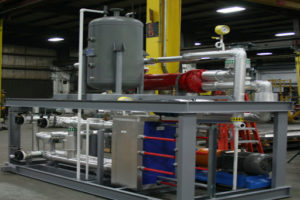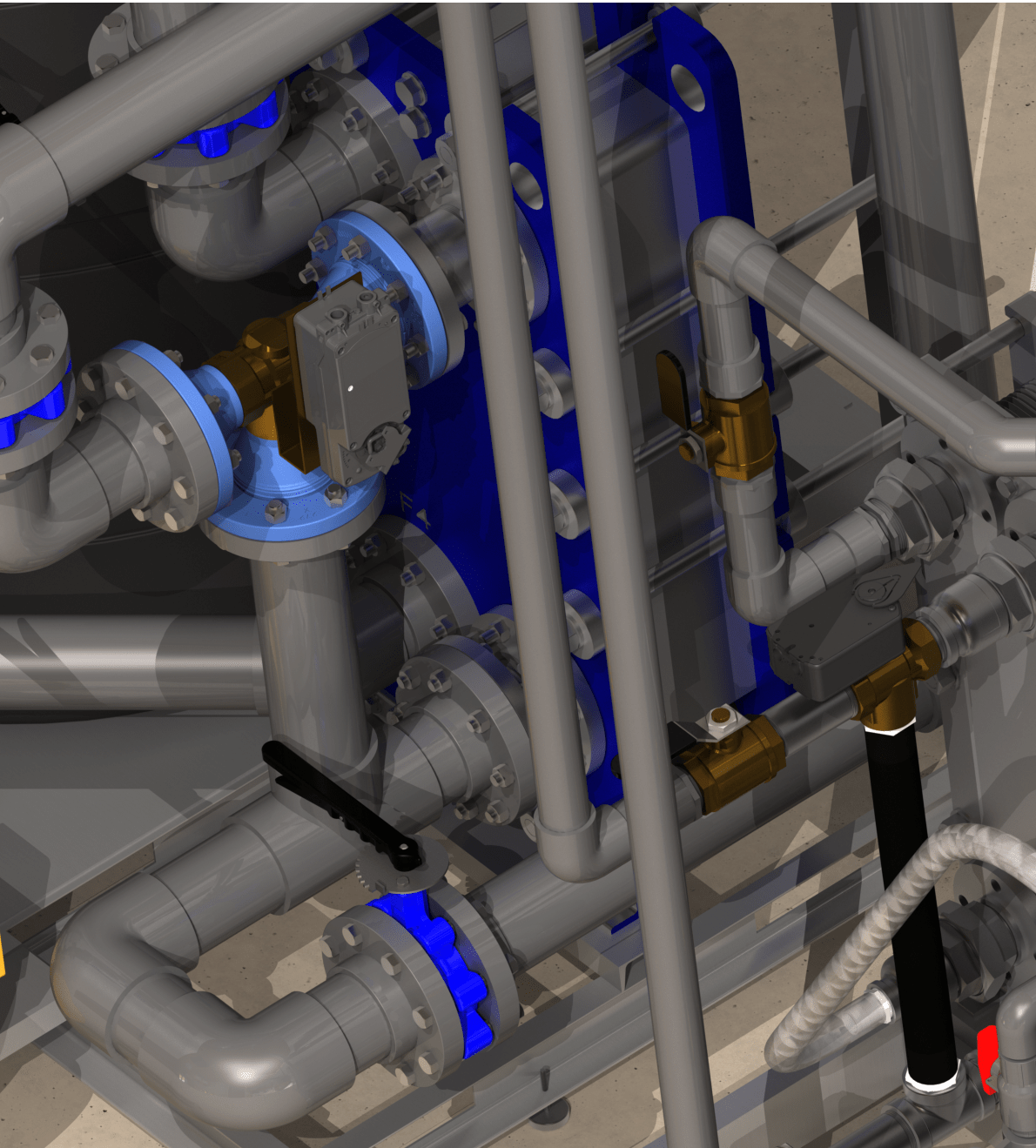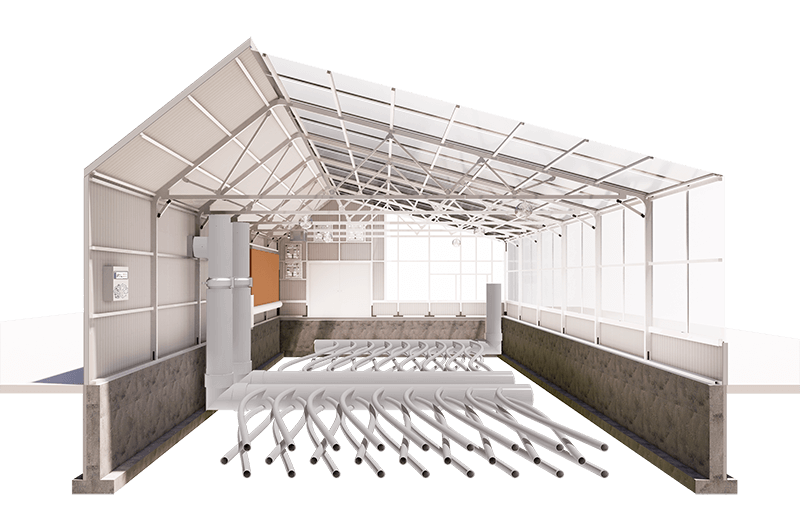A Comprehensive Guide to Picking the Right Heat Transfer Solutions for Your Needs
Picking the ideal Heat transfer system is essential for functional effectiveness. Various systems cater to different requirements, affected by elements such as temperature level range and liquid type. Understanding the concepts behind Heat transfer, such as radiation, convection, and conduction, is important. Additionally, reviewing power sources and maintenance techniques can influence long-lasting performance. A closer examination of these factors to consider reveals exactly how to tailor a system to details needs. What should one prioritize in this complex decision-making procedure?
Understanding Heat Transfer: Secret Ideas and Concepts
Heat transfer might appear like a straightforward idea, it encompasses a range of concepts that are fundamental for efficient system layout - DVS Heat Transfer Systems. Understanding these principles is vital for developers and engineers that aim to optimize thermal performance in numerous applications. Transmission, as an example, entails the transfer of Heat through solid materials, while convection describes the movement of Heat within liquids. Radiation, an additional crucial principle, describes how Heat can be moved via electromagnetic waves. Each of these mechanisms plays a vital duty in determining just how power moves within a system. By extensively comprehending these ideas, professionals can make informed decisions, ensuring that Heat transfer systems run efficiently and satisfy the specific demands of their applications
Sorts Of Heat Transfer Systems: An Overview
Understanding the concepts of Heat transfer lays the groundwork for checking out the various kinds of Heat transfer systems available. Heat transfer systems can be categorized primarily right into 3 types: convection, transmission, and radiation. Conduction entails Heat transfer through strong materials, depending on direct call between bits. Convection, on the other hand, happens in liquids (gases and fluids) where the motion of the fluid itself facilitates Heat transfer. Radiation includes the transfer of Heat with electromagnetic waves and does not call for a tool, permitting it to happen in a vacuum cleaner. Each type of system has distinct characteristics and applications, making it essential for people and companies to thoroughly examine their specific requirements when selecting the most appropriate Heat transfer option.
Applications of Heat Transfer Systems in Numerous Industries
Heat transfer systems play an essential role across various markets, influencing performance and item quality. In commercial production processes, they promote exact temperature control, while in food and beverage handling, they assure security and conservation. Additionally, cooling and heating and climate control systems count heavily on reliable Heat transfer to maintain comfortable atmospheres.
Industrial Manufacturing Processes

Many commercial manufacturing procedures depend greatly on effective Heat transfer systems to maximize productivity and enhance item top quality. In industries such as metalworking, Heat exchangers play an essential duty in maintaining optimal temperature levels throughout welding, casting, and forging. These systems ensure consistent Heat distribution, which is crucial for accomplishing wanted material homes. Similarly, in the chemical manufacturing sector, Heat transfer systems help with accurate temperature control during responses, affecting return and safety and security. Furthermore, in textile production, reliable Heat administration is important for dyeing and completing procedures, influencing color consistency and textile top quality. By choosing proper Heat transfer modern technologies, makers can enhance energy performance and reduce operational expenses, ultimately bring about an extra lasting and affordable production environment.
Food and Drink Processing
Efficient Heat transfer systems are equally essential in the food and drink processing sector, where preserving perfect temperatures is essential for food security and quality. These systems play an important role in processes such as sterilization, pasteurization, and food preparation, guaranteeing that items are safe for usage and retain their nutritional worth. Heat exchangers, for example, effectively transfer Heat in between liquids, optimizing power usage while lessening temperature level changes. Additionally, refrigeration systems are essential for expanding and preserving perishable products service life. The selection of Heat transfer innovation directly affects functional performance and item integrity, making it important for food and drink suppliers to pick the proper systems customized to their particular handling requirements. This mindful selection eventually adds to customer complete satisfaction and food security.

Cooling And Heating and Climate Control
While several industries rely upon Heat transfer systems for effectiveness, A/C (Heating, Air Flow, and Air Conditioning) plays an important role in preserving interior climate control across different settings. These systems use Heat transfer concepts to regulate moisture, air, and temperature level high quality, making sure comfort and safety in domestic, business, and commercial environments. Appropriately designed a/c systems boost energy effectiveness, minimize functional prices, and minimize ecological effect. In business structures, for example, effective climate control contributes to worker productivity and client satisfaction. In industrial applications, heating and cooling systems assist maintain optimal conditions for tools procedure and product conservation. Choosing the ideal Heat transfer system is vital for conference specific climate control demands and accomplishing total system performance.
Examining Power Sources for Heat Transfer Solutions
In examining energy sources for Heat transfer systems, a comparison of renewable resource options and nonrenewable fuel source factors to consider is necessary. Renewable sources, such as solar and wind, deal sustainable alternatives that can decrease ecological influence. Alternatively, nonrenewable fuel sources remain widespread because of their well established infrastructure and energy thickness, motivating a mindful assessment of both alternatives.
Renewable Power Options

Fossil Fuel Factors To Consider
Examining nonrenewable fuel source factors to consider is vital for the effectiveness and sustainability of Heat transfer systems. Fossil fuels, such as natural gas, oil, and coal, are typical energy sources that give considerable Heat result, making them prominent selections for residential and industrial applications. Their environmental influence, consisting of greenhouse gas emissions and source depletion, raises concerns. When picking a heat transfer system, it is essential to examine the schedule, price, and governing aspects linked with these fuels. In addition, the efficiency of nonrenewable fuel source systems need to be taken into consideration, as greater performance can minimize some ecological drawbacks. Eventually, a well balanced approach evaluating efficiency and sustainability can assist decision-makers toward one of the most appropriate Heat transfer solution for their details requirements.
Aspects to Consider When Selecting a Heat Transfer System
Choosing a proper Heat transfer system calls for mindful factor to consider of different elements that can significantly influence performance and efficiency. One vital element is the operating temperature array, which determines the products and layout ideal for the application. In addition, the kind of liquid utilized in the system-- whether gas or liquid-- impacts Heat transfer effectiveness and compatibility. The system's dimension and capability should line up with the particular needs of the operation to avoid ineffectiveness. Energy resource schedule is additionally essential, influencing operating expenses and sustainability. The installation environment, consisting of area restrictions and ease of access for maintenance, plays a significant role in system selection. Regulatory conformity and security standards have to be considered to assure the system fulfills all legal demands.
Maintenance and Efficiency Optimization for Heat Transfer Systems
Preserving Heat transfer systems is crucial for making sure maximum performance and long life. Normal maintenance tasks, such as cleaning Heat exchangers and evaluating insulation, aid avoid performance losses because of fouling and thermal linking. Additionally, checking system parameters, consisting of stress and temperature level, enables very early detection of anomalies, minimizing downtime and expensive repairs. Carrying out a preventive maintenance timetable can optimize performance and prolong the life-span of elements. Updating to innovative control systems can enhance operational efficiency by changing to varying conditions and tons. By focusing on upkeep and effectiveness optimization, drivers can accomplish lowered power usage, lower operational prices, and boosted overall system reliability, eventually leading to much better source use and an extra sustainable procedure.
Future Trends in Heat Transfer Technologies
As sectors increasingly prioritize sustainability and power performance, future patterns in Heat transfer modern technologies are established to useful content undergo substantial improvements. Developments such as innovative products, consisting of carbon nanotubes and nanofluids, promise enhanced thermal conductivity and performance. Furthermore, the combination of renewable resource resources right into Heat transfer systems is obtaining energy, promoting environmentally friendly remedies. Smart technologies, including IoT sensors, are anticipated to revolutionize tracking and control, making it possible for real-time information evaluation for maximized performance. The growth of small and modular systems will certainly help with simpler installment and upkeep, providing to diverse applications. These advancements indicate a change towards more lasting, reliable, and adaptable Heat transfer solutions, straightening with international energy objectives and environmental requirements.
Regularly Asked Concerns
What Are the Ecological Effects of Heat Transfer Solutions?
The ecological impacts of Heat transfer systems can include greenhouse gas emissions, energy usage, and prospective thermal air pollution. Additionally, improper disposal of products and ineffectiveness can contribute to source exhaustion and ecosystem interruption.
Just how Do I Calculate the Cost-Effectiveness of a Warmth Transfer System?
To calculate the cost-effectiveness of a warm transfer system, one need to evaluate initial prices, operational expenditures, upkeep demands, and power efficiency, contrasting these aspects the original source against the anticipated life-span and efficiency of the system.
Can Heat Transfer Solution Be Utilized in Residential Setups?
Heat transfer systems can without a doubt be utilized in residential setups. They give efficient home heating and cooling down solutions, making homes extra comfy while possibly decreasing power prices. Their convenience allows for numerous applications in household atmospheres.
What Security Rules Apply to Heat Transfer Solutions?
Safety laws for Heat transfer systems typically consist of guidelines on upkeep, setup, and operation. Conformity with neighborhood building regulations, maker specs, and industry criteria is vital to guarantee risk-free and reliable system efficiency in numerous applications.
Just How Do Various Products Affect Heat Transfer Efficiency?

Transmission, for instance, entails the transfer of Heat through solid materials, while convection refers to the movement of Heat within fluids. Recognizing the concepts of Heat transfer lays the foundation for discovering the numerous kinds of Heat transfer systems offered. Heat exchangers, for circumstances, successfully move Heat in between fluids, enhancing energy use while lessening temperature level variations. In examining power sources for Heat transfer systems, a contrast of renewable energy options and fossil gas considerations is necessary. Metals, such as copper and light weight aluminum, conduct Heat successfully, whereas insulators like rubber and glass slow down Heat circulation.